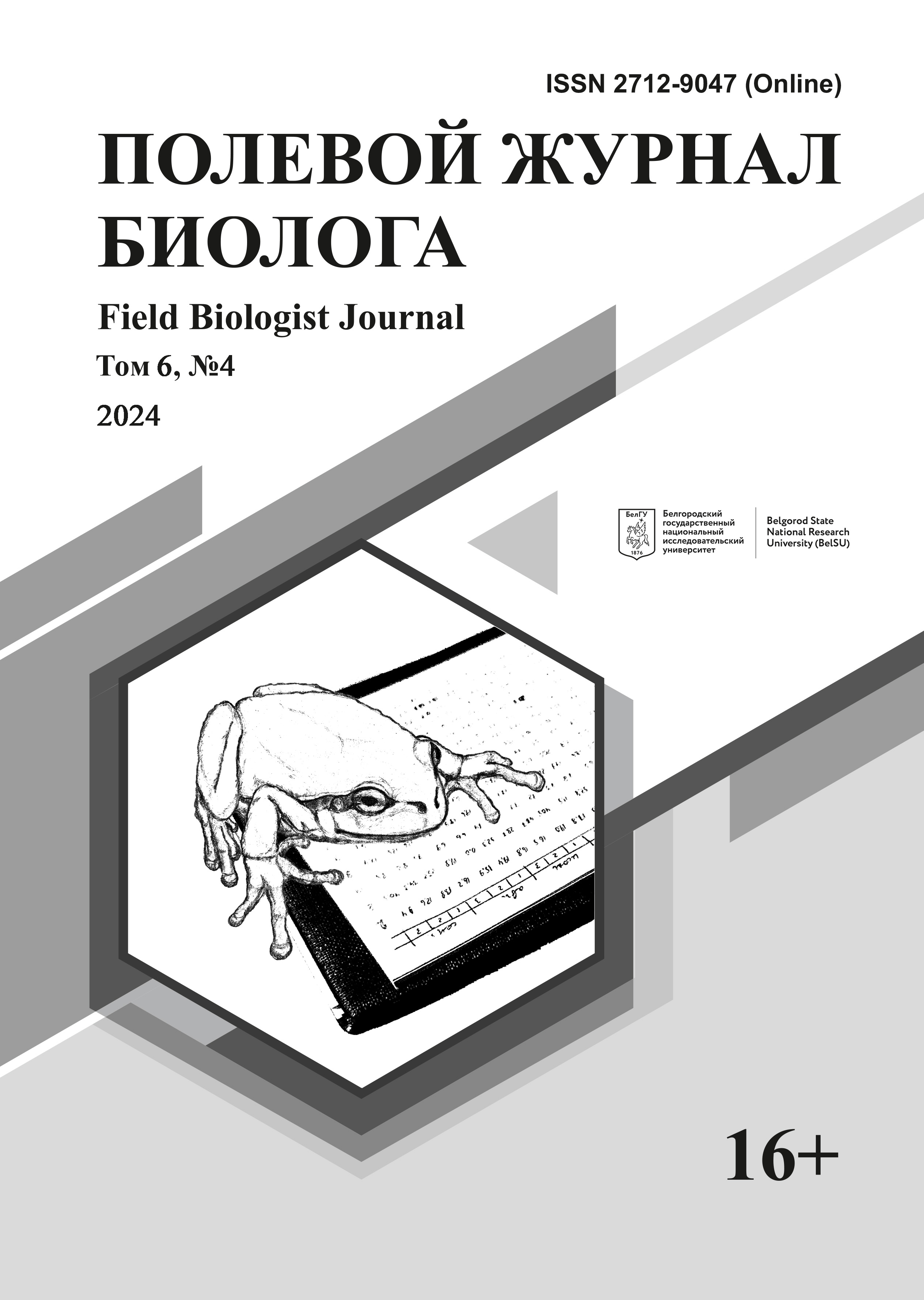Vegetation Cover of the Kulyagash Mire (Republic of Tatarstan)
DOI:
https://doi.org/10.52575/2712-9047-2024-6-4-314-325Keywords:
mire, plant community, flora, rare plant, anthropogenic transformation, environmental factorsAbstract
The aim of the study was to describe the current state of the vegetation cover in the western part of Kulyagash, a unique mire in the Republic of Tatarstan and the forest-steppe of European Russia. The study was carried out in 2020 and 2024 using the route-key method. Floristic and geobotanical descriptions were complied, physicochemical properties of the water were recorded, and the peat deposit thickness was measured. The study revealed 85 higher plant species in the mire flora, including 64 vascular plant species and 21 moss species. Seven species listed in the regional Red Data Book were found. The vegetation of the mire is characterized by a change in communities from the coast to the center. The edges are occupied by eutrophic woody-grass and shrub-grass communities, further replaced by mesotrophic-eutrophic woody-grass-sphagnum ones, while the central parts of the mire are occupied by eutrophic shrub-grass communities. Since the studies conducted in 1945–1946, the mire plant communities have changed, with more eutrophic species and fewer rare boreal species, the shift being possibly caused by anthropogenic factors.
Funding
The work was carried out within the framework of the state assignment of the Papanin Institute for Biology of Inland Waters Russian Academy of Sciences, project No. 124032100076-2.
Downloads
References
Баишева Э.З., Мартыненко В.Б., Миркин Б.М., Мулдашев А.А., Широких П.С., Бикбаев И.Г. 2015. Болота Республики Башкортостан как объект первостепенной охраны. Вестник Академии наук Республики Башкортостан, 20(3): 5–13.
Бакин О.В. 2009. Фиторазнообразие и охрана болотных экосистем на юге лесной зоны востока европейской части России. Дис. … канд. биол. наук. Казань, 150 с.
Баранов В.И. 1947. Болота и торфяники Татарии. Казань, Татгосиздат, 76 с.
Баранов В.И. 1948. Кулигаш. Труды Казанского филиала АН СССР. Серия биологических и сельскохозяйственных наук, 1: 1–73.
Бузук Г.Н., Созинов О.В. 2009. Регрессионный анализ в фитоиндикации (на примере экологических шкал Д.Н. Цыганова. В кн.: Ботаника (исследования). Вып. 37. Минск, Право и экономика: 356–362.
Гришуткин О.Г. 2012. Влияние пожаров 2010 года на болотные экосистемы Мордовского государственного природного заповедника. Труды Мордовского государственного природного заповедника им. П.Г. Смидовича, 10: 261–265.
Гришуткин О.Г. 2021. Болота заповедника «Присурский»: ландшафтно-экологические и геоботанические особенности. Чебоксары. 68 с.
Красная книга Республики Татарстан (животные, растения, грибы). 2016. Издание третье. Казань, Издательство «Идеал-Пресс», 760 с.
Маевский П.Ф. 2014. Флора средней полосы европейской части России. 11-е изд. М., Товарищество научных изданий КМК. 635 с.
Наумов А.В., Косых Н.П., Паршина Е.К., Артымук С.Ю. 2009. Верховые болота лесостепной зоны, их состояние и мониторинг. Сибирский экологический журнал, 16(2): 251–259.
Цыганов Д.Н. 1983. Фитоиндикация экологических режимов в подзоне хвойно-широколиственных лесов. М.: Наука. 196 с.
Hodgetts N.G., Söderström L., Blockeel T.L., Caspari S., Ignatov M.S., Konstantinova N.A., Lockhart N. et al. 2020. An annotated checklist of bryophytes of Europe, Macaronesia and Cyprus. Journal of Bryology, 42(1): 1–116. DOI: 10.1080/03736687.2019.1694329
POWO. 2024. Plants of the World Online. Facilitated by the Royal Botanic Gardens. Available at: http://www.plantsoftheworldonline.org (accessed December 2, 2024).
##article.numberofviews## 127
##submission.share##
Published
How to Cite
Issue
Section
Copyright (c) 2024 Олег Геннадьевич Гришуткин, Дмитрий Сергеевич Щуряков, Денис Владимирович Тишин, Екатерина Евгеньевна Елисеева

This work is licensed under a Creative Commons Attribution 4.0 International License.



